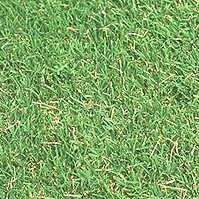To a lot of Australians, grass is grass and it’s as simple as that. But for those in the professional gardening business, or those who just like to pay particular attention to their yard, a lawn is more than a big (hopefully) green patch.
The type of grass picked for a lawn is an important decision to make, especially when considering the fact that different lawn types behave differently in certain weather conditions, and react differently to various levels of traffic and use. We looked at some of the more common types of lawn in Australia, and what differentiates them.
Kikuyu Grass

Taking its name from the most populous ethnic group in Kenya (this grass’s native country), Kikuyu grass is generally regarded as one of the more “vigorous” (read: durable) grasses, and also the most economical lawn. It loves a warmer climate, and thrives in full sun which makes it perfect for Australian homes; the downside of this is that it grows poorly in shady or poorly lit areas. It will regenerate quickly if worn out, which is why it’s often used for schools and sports fields.
The main problem with Kikuyu grass is that its fast-growing nature means that it can become invasive, requiring frequent mowing through the warmer parts of the year. Care must be taken to stop it from escaping the confines of your lawn and spreading to other parts of your home’s yard, or even crossing over to a neighbour’s yard.
Buffalo Grass

Infamous for being incredibly irritating and scratchy, Buffalo grass has, over the last few years, come into its own as a popular choice for lawns with the advent of “Soft Leaf Buffalo” grass types. These grasses, such as Sir Walter and Matilda Buffalo, can make for incredibly lush and soft lawns if maintained correctly. However that being said, an attractive feature of Buffalo grass is the fact that it’s rather durable, and easy to grow and maintain.
Buffalo grass does well in both summer and winter, and is adept at handling the extremes brought by all times of year. It also has self-repairing qualities, making it ideal for high-traffic situations such as a family yard.
Couch Grass

A consistently popular grass with a number of popular sub-types (Queensland Blue, Santa Ana etc.), Couch grass is an easy-going and cheaper grass which can make for a great-looking lawn when treated correctly. It holds up against wear and tear, and is capable of repairing itself rather quickly due to its vigorous underground runners. However these runners can also cause problems in regards to creeping into other non-lawn areas, so the areas adjacent to any Couch grass should be monitored carefully in order to avoid this.
Couch grass will stay relatively vibrant in all seasons, however care should be taken in warmer months to mow it regularly, and to fertilise and nourish it in colder months. Otherwise it may become patchy and unsightly.
Zoysia Grass

A less popular grass in Australia historically speaking, Zoysia grass is starting to gain recognition as a viable and even attractive option for Australian lawns. It’s known for being incredibly soft, with no chance of irritating or scratching the skin. It also grows incredibly slowly, making it attractive for those who aren’t a huge fan of mowing. Slow growth also means that managing potential invasion of surrounding garden beds is made much easier.
Zoysia is an incredibly tough variety of grass, ideal for sports fields and schools. However its slow-growing nature means that if it does become damaged, it will take longer than other grasses to repair itself. Zoysia does well in all seasons; however it’s slightly more susceptible to browning if drought conditions arrive, and as mentioned previously, will recover much slower than other grasses.
Tall Fescue

Tall Fescue is a popular choice for “instant lawns”, which are when pre-grown grass is rolled out on top of soil or pre-existing grass. It’s an incredibly indiscriminate type of grass, being equally happy in sun or shade, and being able to adapt to a wide range of soil conditions and climates. And the cherry on top is the fact that Tall Fescue has no runners, which means that it can’t invade surrounding garden beds or your neighbour’s yard.
Tall Fescue can cope with moderate levels of traffic, being relatively hardy and durable. However it’s not quite as durable as other grasses on this list, such as Zoysia and Kikuyu.
When it comes down to it, you should pick a grass type based on what will work best with your yard. Take the levels of traffic and sunlight into account first, as they are arguably the most important factors to consider when deciding.
If you want to compare lawn mowers to find the perfect one for your garden, check out our customer satisfaction ratings.
Original Author: James Hurwood


Share this article